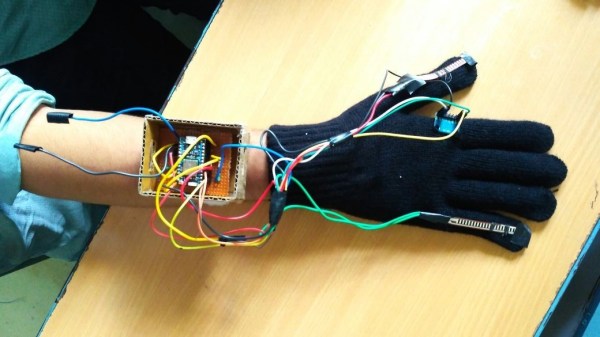For the millions of people suffering from Parkinson’s and other causes of hand tremor, there is new hope in the form of [mohammedzeeshan77]’s entry into the Hackaday Prize: a glove that analyzes and controls the tremors.
The glove uses an accelerometer and a pair of flex sensors to determine the position of the hand as it oscillates. A Particle Photon crunches the raw data to come up with the frequency and amplitude of the tremors and uploads it to the cloud for retrieval and analysis by medical staff.
Hand tremors can vary in frequency and severity depending on the cause. Some are barely perceptible movements, and others are life-disrupting shakes. By analyzing the frequency and amplitude of these tremors, doctors can better understand a patient’s condition.
The best part of this glove is that it also provides immediate relief to the wearer by stabilizing the hand. A rapidly spinning super precision gyroscope counteracts the tremor oscillations as it tries to maintain its position. The last time we saw innovation like this, it came with a set of attachments.
























